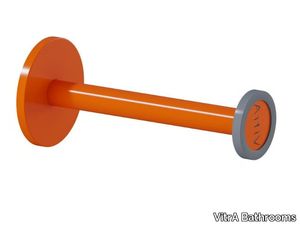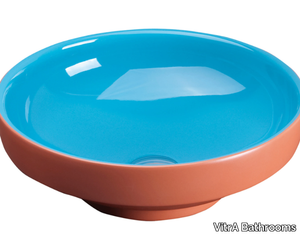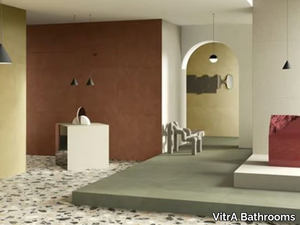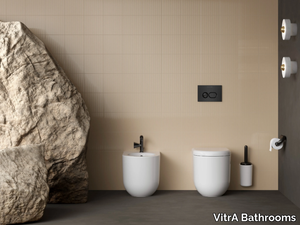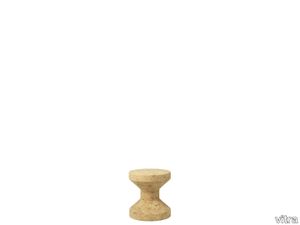FLAKECEMENT - Porcelain wall/floor tiles with concrete effect _ VitrA Bathrooms

VitrA Bathrooms > Wall tile-stone-brick
VITRAIL - Round wall-mounted framed mirror _ Magis
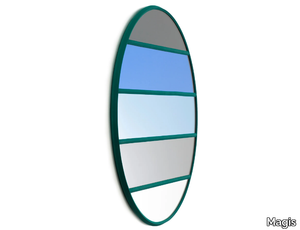
Magis > Accessories
Here’s your rephrased and expanded product description, including a concise supplier overview and mention of the 3D file: *"A mirror not only reflects your image but also transforms a wall, brightening a room like a perpetual window or a softly glowing lamp. Inspired by the charm of Venetian mirrors—where a central glass is adorned with smaller mirrored fragments—the Vitrail collection reimagines this concept with a playful blend of clear and colored mirrors. Each piece features carefully arranged fragments held together by a sleek, injection-molded rubber frame, its flexible design allowing the glass pieces to nest seamlessly into triangular gaps. Available in four versatile formats (square, rectangular, oval, and round), the collection offers eight distinct variations, with some models featuring dual-color frames and striking lateral mirror combinations. The round design, divided into five dynamic strips, comes in two bold colorways and can be hung horizontally, vertically, or diagonally. For added convenience, the 3D file of the product is available for download, enabling seamless integration into virtual design plans. Designed by Inga Sempé for Magis, a renowned Italian brand celebrated for its innovative and high-quality furniture since 1976, Vitrail merges artistry with contemporary functionality."* Let me know if you'd like any further refinements!
VITRAIL - Oval wall-mounted framed mirror _ Magis
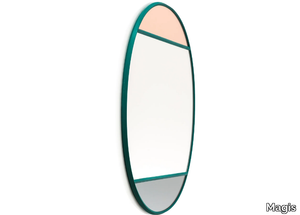
Magis > Accessories
Here’s your rephrased and expanded product description, including a concise supplier overview and a mention of the 3D file availability: *"A mirror does more than reflect—it brightens a room and animates a wall, acting like a perpetual window or a softly glowing lamp. Inspired by the charm of Venetian mirrors, where small mirrored fragments surround a central pane, the Vitrail collection reimagines this concept with a playful mix of clear and colored glass. Each mirror is composed of multiple pieces in contrasting hues, held together by a flexible, injection-molded rubber frame that gently secures the fragments within its triangular gaps. Available in four versatile formats—a small square, a large rectangle, an oval, and a round design—the collection offers eight distinct variations. The square, rectangle, and oval feature a central clear mirror flanked by two colored accents, while the round model divides into five strips, offered in two striking colorways: light grey with pastel green glass or green with a gradient of black to light grey. Designed for dynamic display, the pieces can be hung horizontally, vertically, or (for the round mirror) diagonally. For those interested in digital integration, the 3D file of the product is available for download. Crafted by Inga Sempé and produced by Magis, a renowned Italian design brand known for its innovative furniture and home accessories since 1976, Vitrail blends artistry with contemporary functionality."* (Note: I condensed the supplier description to one sentence while keeping key details—let me know if you'd like any adjustments!)
VITRAIL - Square wall-mounted framed mirror _ Magis
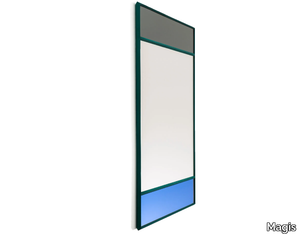
Magis > Accessories
Here’s your rephrased and expanded product description, including a concise supplier overview and mention of the 3D file availability: *"A mirror not only reflects your image but also transforms a wall, brightening a room like a perpetual window or a softly glowing lamp. Inspired by Venetian mirrors—where a central glass is artfully framed by smaller mirrored fragments—the Vitrail collection reinterprets this classic concept with a modern twist, blending clear and colored mirrors in playful contrast. Each piece is composed of multiple mirrored sections held together by a sleek, injection-molded rubber frame, its flexible design allowing the fragments to nest seamlessly into the triangular gaps of the thin rubber structure. Available in four versatile formats (a small square, a large rectangle, an oval, and a round model), the collection offers eight distinct variations, each with unique color combinations. The round design, divided into five strips, comes in two striking versions: a light grey frame with pastel green mirrors or a green frame with gradient black-to-grey fragments, and can be hung horizontally, vertically, or diagonally for dynamic display. For added convenience, the 3D file of the product is available for download, enabling seamless integration into virtual design plans. Designed by Inga Sempé and brought to life by Magis, a renowned Italian design brand celebrated for its innovative furniture and home accessories since 1976, Vitrail merges artistry with contemporary craftsmanship."*
VITRAIL - Rectangular wall-mounted framed mirror _ Magis
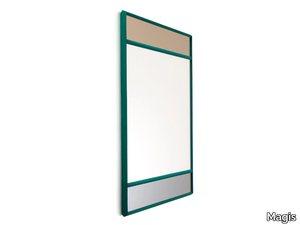
Magis > Accessories
Here’s your rephrased and expanded product description, including a concise supplier overview and a mention of the 3D file availability: *"A mirror does more than reflect—it animates a wall and brightens a room like a perpetual window or a softly glowing lamp. Inspired by Venetian mirrors, where a central glass is adorned with smaller mirrored fragments, the Vitrail collection reinterprets this concept with a playful blend of clear and colored mirrors. Each piece is composed of multiple reflective shards held together by a sleek, injection-molded rubber frame, its flexible design allowing the fragments to nest seamlessly into triangular gaps. Available in four versatile formats—a small square, a large rectangle, an oval, and a round design—the collection offers eight distinct variations. The square, rectangle, and oval feature a central clear mirror flanked by two colored accents, while the round model divides into five strips, offered in two striking colorways: light grey with pastel green or green with a gradient from black to light grey. Designed for dynamic display, the pieces can be hung horizontally, vertically, or (for the round mirror) diagonally. For those seeking digital integration, a 3D file of the product is available for download. Crafted by Inga Sempé for Magis, a renowned Italian design brand celebrated for its innovative furniture and home accessories since 1976, Vitrail merges artistry with contemporary functionality."*
HAL RE Sledge
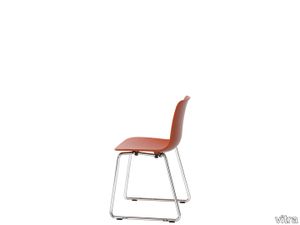
vitra > Chair
HAL RE Sledge with its sledge base and seat shell made of recycled plastic is part of the multifaceted HAL family of chairs by Jasper Morrison. Its distinctive structure lends the chair excellent stability and unmistakeable character. HAL RE Sledge can be stacked on the floor or on the stacking trolley and is also available with row connectors. It is an excellent choice for auditoriums, cafés and restaurants, waiting rooms, meeting zones and any other setting requiring flexible seating options.
Abalon Platform
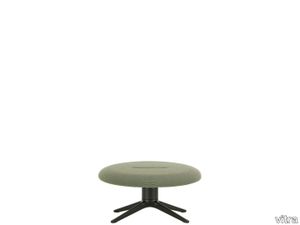
vitra > Stool
Abalon Platform is a round stool that can be used as a flexible seat as well as a footrest. The carefully proportioned, widely splayed legs of the base not only ensure a high degree of stability, but also clearly identify the stool as a member of the Abalon family.
Organic Highback
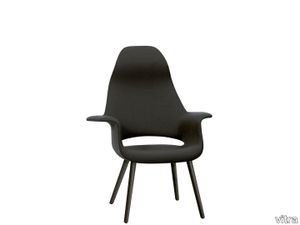
vitra > Chair
Designed by Charles Eames and Eero Saarinen in 1940 as part of their entry for 'Organic Design in Home Furnishings', a competition organised by the Museum of Modern Art in New York, Organic Highback is regarded as a classic. The comfortably upholstered compact armchair with its strikingly shaped high seat shell is also available with a medium backrest – the Organic Chair – or in the Organic Conference version for dining tables.
Wire Chair DKW
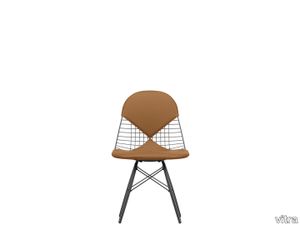
vitra > Chair
The Wire Chairs by Charles and Ray Eames echo the form of the Eames Plastic Chairs. The spot-welded wire shell gives the metal chairs their transparent look, while the wooden base of the DKW lends a warm and casual contrast to the essentially technical appearance of the design. The metal components of DKW have a black powder-coated finish; the four wooden legs come in various shades of maple.
The Chair Collection Poster
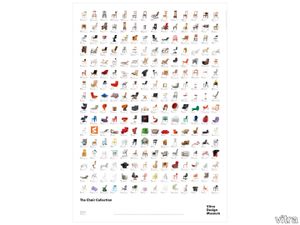
vitra > Styling
Our classic The Chair Collection poster shows 224 selected pieces in the Vitra Design Museum’s collection, which currently comprises more than seven thousand objects. The poster is updated at regular intervals, most recently in November 2022, and is now available in its seventh edition. The objects are arranged chronologically according to design year, starting with the Chaise de Garde by Jean-Joseph Chapuis from 1802 and continuing up to 2022 with a design by Jonathan Muecke. All items from the collection are listed with the original manufacturer of the first product series.
Metal Wall Relief Sun
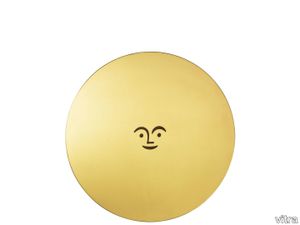
vitra > Styling
The Metal Wall Reliefs are ornamental examples of wall decorations created by Alexander Girard for diverse interiors. Crafted from brass, the Metal Wall Relief Sun was designed by Girard as a wall decoration for The Compound restaurant in Santa Fe.
AM Chair
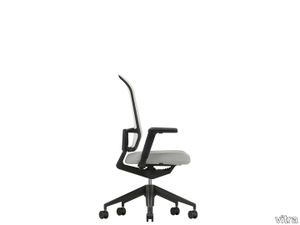
vitra > Office Chair
The AM Chair is the combined result of engineering skill, quality design and experience, uniting ergonomic functionality with technical elegance. Dynamic armrests and a height-adjustable back give the chair an emblematic appearance, while the slender plastic frame and translucent mesh cover bestow a sense of lightness and grace.
Kado Office
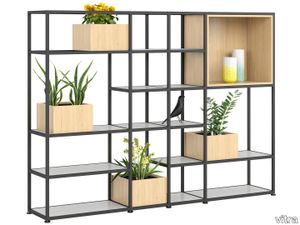
vitra > Chair
Kado Office is a minimalist interior planning system consisting of freestanding structures. The clean lines of the frame give it an architectural look and playful three-dimensionality. Kado Office is accessible from both sides, so that in addition to providing storage space, it can also be modified with further elements and predefined modules to serve many other functions that facilitate office work.
Akari UF4-L8
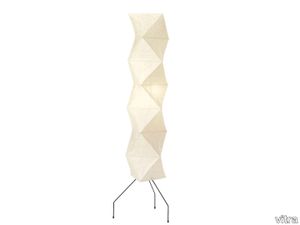
vitra > Styling
The Akari Light Sculptures (1951) by Isamu Noguchi are a series of luminaires, handcrafted from traditional washi paper by Japanese artisans. ‘The harshness of electricity is thus transformed through the magic of paper back to the light of our origin – the sun.’ (Noguchi)
Akari 7A

vitra > Styling
The Akari Light Sculptures (1951) by Isamu Noguchi are a series of luminaires, handcrafted from traditional washi paper by Japanese artisans. ‘The harshness of electricity is thus transformed through the magic of paper back to the light of our origin – the sun.’ (Noguchi)
Miniatures Big Easy
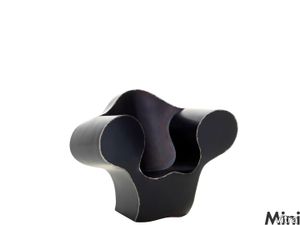
vitra > Styling
Produced and distributed by Vitra Design Museum, Weil am Rhein/Germany after an original model by One Off Ltd., London. With the kind permission of Ron Arad, London. All rights reserved.<br/><br/>In 1988 and 1989, Arad's London »One Off« work shop created an entire series of »Big Easy« armchairs using bent sheet steel welded at the edges. The »Big Easys« were brought out as individual items or small limited series; they all had a striking basic form and inflated arms reminiscent of comics – but they differed in terms of the welding and color. In the course of time, the initially oarse, roughly welded »Big Easys« went through changes, first becoming colorful lacquered chairs with smooth surfaces and then elegant versions made of polished stainless steel. <br/><br/>Although Ron Arad's furniture are variants on everyday things, they seem strange and irritate the eye – not only owing to the choice of material. Formally and functionally speaking, they undermine customary assumptions. You feel you have to first learn how to use them. A »Big Easy's« voluminous steel body of the »Big Easy« resembles a traditional upholstered club armchair but can hardly be associated with a sense of comfortable interiors. Ron Arad considered it an art object that could likewise be functional, but was not intended to be particularly practical.
Wall Clocks - Popsicle Clock
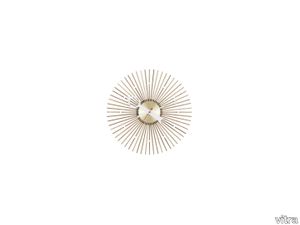
vitra > Styling
With his collection of Wall Clocks (1949-1960), George Nelson conceived a wide array of timepieces, many of which have since become icons of 1950s design.
Akari 55A
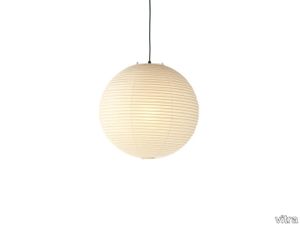
vitra > Styling
The Akari Light Sculptures (1951) by Isamu Noguchi are a series of luminaires, handcrafted from traditional washi paper by Japanese artisans. ‘The harshness of electricity is thus transformed through the magic of paper back to the light of our origin – the sun.’ (Noguchi)
Wooden Doll No. 17

vitra > Styling
Alexander Girard originally created the Wooden Dolls (1952), a whimsical assortment of figures both joyful and grim, for his own home. Today they add a charming touch to any interior.
Miniatures Stuhl No. 14
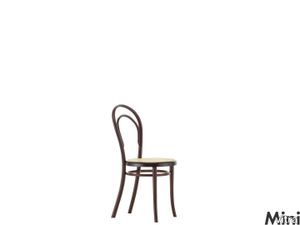
vitra > Styling
The »No. 14« armchair is one of the world's most successful, mass-produced products. It was the standard model in Thonet's collection of bent-wood furniture and is considered the typical Viennese coffee-house chair. By 1930, 50 million of the chairs had already been sold. A modified version of the »No.14« is still being produced today.<br/><br/>Using the bent-wood technique developed by Michael Thonet, solid wood is shaped subjected to steam pressure and shaped three-dimensionally in iron moulds, this offers a great deal of scope for creativity in the design. Thonet's new packaging system was also revolutionary for the second half of the 18th century. The individual parts of the chairs were packed in an extremely space saving manner and then sent to their final destination, where they were first screwed together. The Thonet brothers combined industrial production processes and a business-oriented approach with a unique aesthetics, making a substantial contribution to our current concept of industrial design.
Desk Clocks - Chronopak
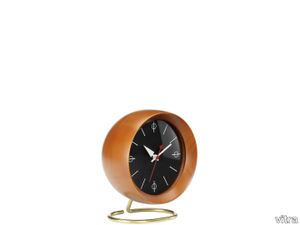
vitra > Styling
The many accessories created for the home by George Nelson include a variety of table clocks. Representing a selection of these classic designs, the Desk Clocks offer a refreshing alternative to conventional clocks. Equipped with high-quality quartz movements, the charm of these decorative timepieces is equalled by their precision.
Wooden Doll No. 10

vitra > Styling
Alexander Girard originally created the Wooden Dolls (1952), a whimsical assortment of figures both joyful and grim, for his own home. Today they add a charming touch to any interior.
Sofa Tray
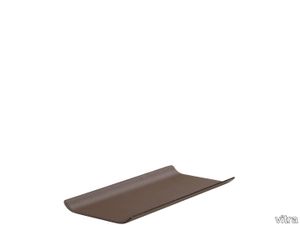
vitra > Styling
The narrow rectangular Sofa Tray (2017) by Antonio Citterio is made of leather-covered steel and provides a stable storage area on soft, upholstered surfaces.
Abalon Table
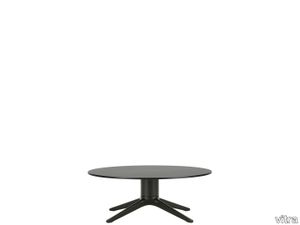
vitra > Coffee table
The Abalon Sofa and Abalon Platform can be complemented with the Abalon Table from the same product family. The round tops of this coffee table are available in a choice of finishes.
Eames Plastic Armchair DAX

vitra > Chair
The Plastic Chairs by Charles and Ray Eames were the very first chairs to be developed out of plastic for industrial production. Their organically shaped seat shells can be combined with a variety of different bases. The DAX chair (Dining Height Armchair X-Base) has a visually understated four-legged tubular steel base, which comes in a powder-coated version that is also suited for outdoor applications.
Softshell Chair, four-star base
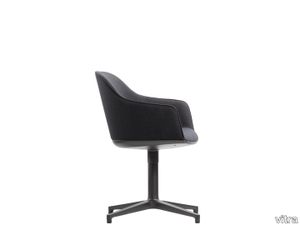
vitra > Chair
The Softshell Chair offers exceptional comfort, thanks to flexible ribs concealed in the back shell. Designed by Ronan and Erwan Bouroullec, the elegant, understated chair with the four-star base is available in a selection of colours, in leather or fabric.
Miniatures Panton Chairs (Set of 5)
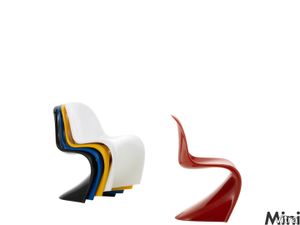
vitra > Styling
Inspired by Pop Art and Pop Culture, 1960 furniture design broke with the purism of modern functionalism. The use of new materials liberated furniture from the constraints of traditional structures and made it possible for designers to play imaginatively with form and color. <br/><br/>At international furniture exhibitions, designers like Verner Panton presented futuristic-looking interior landscapes to go with a free and easy, hedonistic lifestyle. Verner Panton wrote of his works: »I try to forget existing examples, even if they are well made, and find my own way of coming to terms with the materials. The result seldom has four legs, not because I do not want to make a chair but because working with new materials like wire mesh and polyester demands new forms.« <br/><br/>The Panton Chair is regarded today as one of the classics of modern furniture design. It was the first chair in design history to have no back legs and be moulded in one piece entirely out of plastic. It took nearly 12 years of development work before the idea could be put into practice.<br/>
Comma
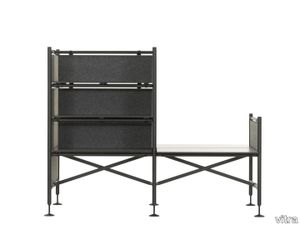
vitra > Chair
The office system Comma follows the function and aesthetic of scaffolding, and can be reassembled in different configurations time and again, structuring the work environment as needed.
Soft Modular Sofa four-seater, platform

vitra > Sofa
With carefully balanced proportions, great comfort and a conscious renunciation of decorative details, the Soft Modular Sofa (2016) by Jasper Morrison unites the characteristics of a modular lounge sofa in its purest form.
Wooden Doll No. 2

vitra > Styling
Alexander Girard originally created the Wooden Dolls (1952), a whimsical assortment of figures both joyful and grim, for his own home. Today they add a charming touch to any interior.
Coffee Mugs - Moon
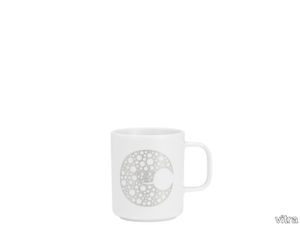
vitra > Styling
The designer and architect Alexander Girard created a number of restaurant interiors, for which he also developed coordinated objects and accessories. The motifs featured on the Coffee Mugs have their origins and inspiration in these rich and varied environments.
HAL Ply Studio
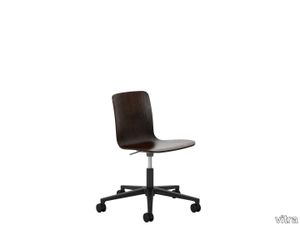
vitra > Chair
The swivel task chair HAL Ply Studio is part of the HAL family of chairs by Jasper Morrison and comes on a height-adjustable base with castors to ensure pleasant comfort. Its plywood seat shell lends a touch of warmth and elegance to informal work environments, studio offices, workshop zones, libraries or home office settings. Cushions from the Soft Seats range can be added for enhanced well-being and a splash of colour.
NesTable

vitra > Styling
The need for private spheres and quiet places to concentrate has been recognised in today's open space office environments. Sofa lounges and comfortable seating areas are now readily provided - but how do you work in a lounge chair? By using NesTable with its fully adjustable platform height and inclination. Thanks to the shape of its base, this versatile table can be drawn up closely to most types of seating.
Akari 1AG
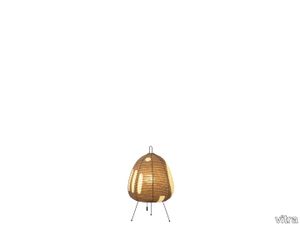
vitra > Styling
The Akari Light Sculptures (1951) by Isamu Noguchi are a series of luminaires, handcrafted from traditional washi paper by Japanese artisans. ‘The harshness of electricity is thus transformed through the magic of paper back to the light of our origin – the sun.’ (Noguchi)
Hang it all
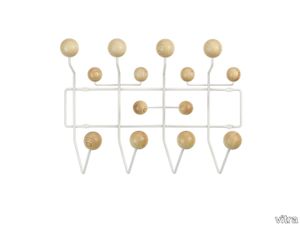
vitra > Styling
The 'Hang it all' coat rack designed by Charles and Ray Eames, which comes in a variety of colour combinations, encourages children to literally hang up all their things. With its colourful wooden balls, 'Hang it all' is a cheerful alternative to conventional coat hooks – and not just in children's rooms.
Chaise Tout Bois
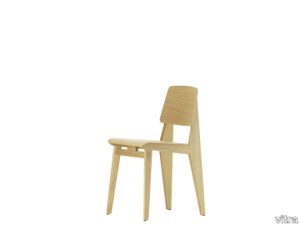
vitra > Chair
Chaise Tout Bois is the only chair by the French 'constructeur' and designer Jean Prouvé that is made entirely out of wood. The design is very similar to Prouvé's famous Standard chair, but wood was substituted for the metal base due to the scarcity of metal during the Second World War. The form of the Chaise Tout Bois articulates Prouvé's intention to provide added strength at the transition point between the seat and backrest, where the load weight of the human anatomy is greatest. The profile of the rear frame section – back legs and backrest support – makes reference to this load transfer and is a typical characteristic of Prouvé's designs for both furniture and architecture.<br/><br/>Prouvé created several prototypes of this chair during the war for the purpose of testing its structural strength as well as the joints, leg position and connection between the seat and back. The chosen type of wood depended on what was available at the time. After the war, there was once again a sufficient supply of oak, which due to its hardness and strength was commonly used in France to construct ships and cathedral roofs. As these properties are also ideal for an all-wood chair, the Chaise Tout Bois was ultimately made out of oak and plywood – also offered in dark-stained versions when requested by Jean Prouvé's customers.<br/><br/>In 1947, Prouvé won an award for the Chaise Tout Bois in the 'Meubles de France' competition. The concept of the competition was to find attractive, high-quality, mass-produced furnishings to meet the post-war needs of society – particularly refugees and young married couples. Later the Chaise Tout Bois was replaced by a knock-down version in metal and wood, which was then supplanted by Model No. 305, likewise combining a metal base with a wooden seat and backrest – known today as the Standard chair.<br/><br/>Chaise Tout Bois by Vitra corresponds to one of Jean Prouvé's design variants from 1941, whose construction does not require a single screw. The height and seat geometry are the same as those of the Standard chair and thus meet current norms and requirements. The warm look and feel of wood contrasts appealingly with the practical structural design, which is typical of Prouvé's functional approach. Chaise Tout Bois is available in light oak or dark-stained oak.
Potence

vitra > Styling
Designed as a pivoting wall lamp for the 'Maison Tropique', Potence (1950) is regarded as one of Jean Prouvé's puristic masterpieces. The dimmable luminaire is over two metres long.
Akari 45X
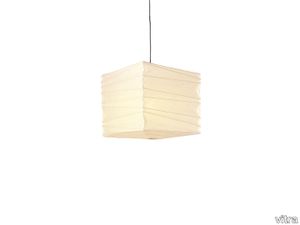
vitra > Styling
The Akari Light Sculptures (1951) by Isamu Noguchi are a series of luminaires, handcrafted from traditional washi paper by Japanese artisans. ‘The harshness of electricity is thus transformed through the magic of paper back to the light of our origin – the sun.’ (Noguchi)
Unix Chair, cantilever

vitra > Chair
The practical, robust Unix Chair by Antonio Citterio is the ultimate all-rounder. The cantilever chair flexes comfortably under the user and is ideal for for visitor and conference settings.
HAL Ply Wood
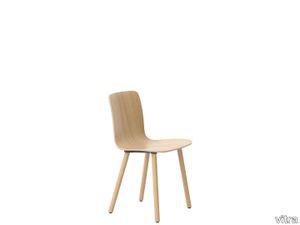
vitra > Chair
HAL Ply Wood is a wooden chair with a robust connecting plate beneath the shell. This design by Jasper Morrison combines a comfortable seat shell with a distinctive four-legged base. The seat and legs of the chair are available in various types of wood with matching finishes. HAL Ply Wood can be used together with other chairs in the extensive HAL family.
Akari 70EN
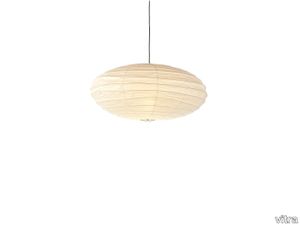
vitra > Styling
The Akari Light Sculptures (1951) by Isamu Noguchi are a series of luminaires, handcrafted from traditional washi paper by Japanese artisans. ‘The harshness of electricity is thus transformed through the magic of paper back to the light of our origin – the sun.’ (Noguchi)
Eames Plastic Armchair DAR
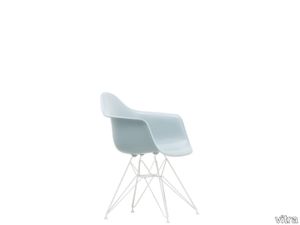
vitra > Chair
Since the early 1950s, when Charles and Ray Eames developed their Plastic Chairs, these furnishings have become icons of American mid-century modernism. In particular, the DAR chair (Dining Height Armchair Rod Base) stands out as an inimitable classic design combining light, elegant forms with structural strength in the intricate steel wire construction of its 'Eiffel Tower' base.
HAL Beam Seating
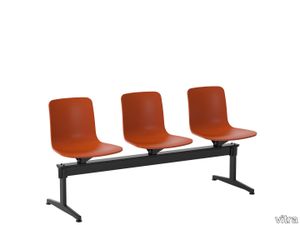
vitra > Bench
HAL Beam Seating is a robust solution for all types of waiting areas – from airports, train stations, foyers or lobbies to waiting rooms in a medical practice. Thanks to the understated design of the easy-care RE seat shells moulded from recycled plastic or in a plywood version, HAL Beam Seating is compatible with many different interior styles.
Embroidered Pillows - Home Sweet Home, light grey

vitra > Styling
Alexander Girard attracted a great deal of attention with his interior design of the legendary Miller House, for which he personally selected each individual object. The centrepiece of the house was a so-called 'conversation pit', a sunken seating area outfitted with decorative pillows made specifically for this setting. The embroidered pillow 'Home Sweet Home' is pleasantly firm and elaborately stitched.
Akari UF4-33N
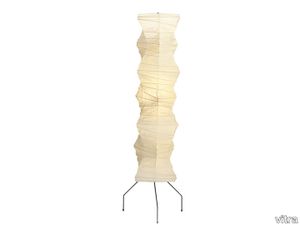
vitra > Styling
The Akari Light Sculptures (1951) by Isamu Noguchi are a series of luminaires, handcrafted from traditional washi paper by Japanese artisans. ‘The harshness of electricity is thus transformed through the magic of paper back to the light of our origin – the sun.’ (Noguchi)
